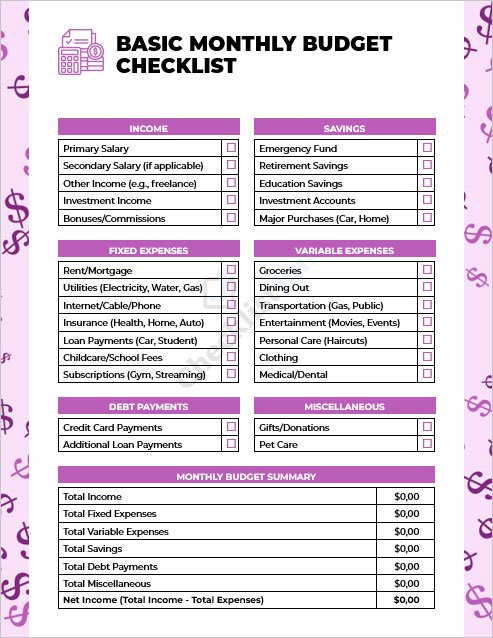
Complete Emergency Fund Strategy
Building financial security through Canada's unique liquidity system. Statistics show roughly one in four Canadian households cannot handle a $500 emergency without borrowing.
Read Guide →
The Canadian Three-Tier Emergency Fund System
Tier 1: Stability Fund (core emergency reserve), Tier 2: Opportunity Fund (strategic liquidity), Tier 3: Wealth Reservoir (advanced strategy for $100K+ net worth).
Read Guide →
Monthly Emergency Fund Contribution Schedule
Start small but consistent: Month 1-3: $200/month → $600, Month 4-12: $300/month → $3,600, Year 2: $400/month → $4,800 total.
Read Guide →
Canadian Savings Account Hierarchy
Emergency Fund (3-6 months expenses) in HISA or TFSA, Short-term Goals (1-3 years) in TFSA savings, Medium-term (3-10 years) in TFSA investments, Long-term (10+ years) in RRSP or TFSA.
Read Guide →
TFSA vs RRSP Strategy for Families
TFSA: Tax-free growth, no impact on benefits, flexibility. RRSP: Immediate tax deduction, higher income households benefit most, employer matching programs, income splitting opportunities.
Read Guide →
Family Savings Automation
Monthly transfers: Emergency fund 5-10% of net income, TFSA contribution $500-1,000 monthly, RESP contribution $125-250 per child, major purchase fund 2-5% of income.
Read Guide →
Savings Acceleration Strategies
Windfall allocation (tax refunds, bonuses, gifts), automatic escalation (increase savings rate annually), investment income reinvestment, side hustle income allocation.
Read Guide →
Savings Tips
Pay yourself first (savings before discretionary spending), use windfalls strategically, increase savings rate annually, separate emergency fund from other savings, review investment allocations regularly.
Read Guide →Complete Emergency Fund Strategy
Statistics show roughly one in four Canadian households cannot handle a $500 emergency without borrowing, and more than half would struggle with an expense over $1,000. Rising costs, inflation, and competing priorities like mortgages make emergency preparedness essential for Canadian families.
Why Canadians Need Emergency Funds
- Housing affordability challenges
- Rising cost of living pressures
- Variable income from seasonal employment
- Healthcare cost exposure
- Economic uncertainty and job market volatility
The Canadian Three-Tier Emergency Fund System
Tier 1: The Stability Fund (Core Emergency Reserve)
- Purpose: Protect against immediate financial shocks
- Recommended Amount: Minimum $1,000, one month of expenses, final target three months
- Where to Keep It: High-Interest Savings Account (HISA) or TFSA
- Key Benefits: Instant access, peace of mind, avoids debt during emergencies
Tier 2: The Opportunity Fund (Strategic Liquidity)
- When to Build: After achieving 3 months of expenses in Tier 1
- Structure: 1-2 months expenses in cash + zero-balance personal Line of Credit
- Benefits: Capital can work harder while maintaining safety net
- Strategy: Use LOC as safety valve, not primary fund
Tier 3: The Wealth Reservoir (Advanced Strategy)
- When to Consider: For mid-to-high net worth households ($100K+ net worth)
- Structure: High cash value whole life insurance policy
- Benefits: Tax-sheltered growth, guaranteed returns, accessible through policy loans
- Role: Balances portfolio volatility while providing liquid access
TFSA vs RRSP Strategy for Families
TFSA Priority Factors
- Tax-free growth and withdrawals
- No impact on government benefits
- Flexibility for emergency fund storage
- Can fund major purchases without tax implications
- Contribution room carries forward
RRSP Priority Factors
- Immediate tax deduction
- Higher income households benefit most
- Employer matching programs (free money)
- Principal residence exemption strategy
- Income splitting opportunities in retirement
Recommended Strategy
- Start with TFSA for flexibility and no tax impact
- Prioritize TFSA until maxed out
- Then contribute to RRSP if in higher tax bracket
- Consider employer RRSP matching first (free money)
Savings Tips
- Pay yourself first (savings before discretionary spending)
- Use windfalls strategically (tax refunds, bonuses, gifts)
- Increase savings rate annually with salary growth
- Separate emergency fund from other savings
- Review investment allocations regularly
- Take advantage of employer matching programs
- Automate savings transfers to build consistency